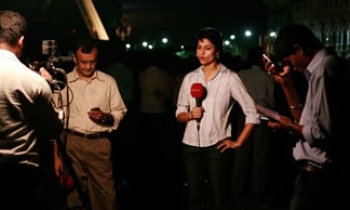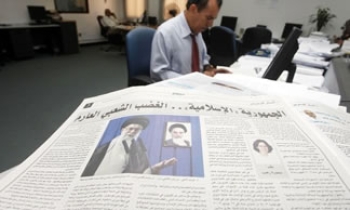Experts say the biggest problem in the newspaper industry is capturing readers between 18 and 34 years old, and now The Associated Press is looking to tackle that problem head on.
On Monday, the 157-year-old wire service is to start its "younger audience service," offering articles and "experiences" in multimedia formats, with audio, video, blogs and wireless text aimed at reaching readers between 18 and 34 years old. The service, one of the most ambitious projects undertaken by The A.P., is called asap, pronounced letter by letter, meant to evoke the wire service's legendary speed.
The pilot project for asap was approved by The A.P.'s board of directors in April. Tom Curley, president of the wire service, said at the time, "As the audience turns to new platforms and adopts new habits, the news must follow."
More than 100 newspapers have signed up for asap and will decide on their own how to make it available to their readers. Many are expected to use the service for their online editions, while some will use it for print editions or both print and online editions. Ruth Gersh, director of online services at The A.P. and project development manager for asap, said that as far as she knew, none of the papers would be charging readers for asap's content.
A.P. executives would not say how much the service costs, but they said the price depended on the circulation of the newspaper buying it.
Ted Anthony, the 37-year-old editor of asap, said the content would include original material generated by a new staff of 20 journalists, most of whom will start in New York, as well as personal essays by the wire service's global staff.
For example, he said, an A.P. reporter might file a news article from Kazakhstan for the wire but recount his journey in an audio clip for asap.
A prototype also included a photo essay on vendors of street food in cities around the world, a piece that highlights The A.P.'s global reach. While bloggers often write about domestic events, rarely do they venture out to report firsthand on the outside world. The A.P.'s ability to do this could underscore for readers the strength of traditional news organizations that can afford to base reporters around the world.
"We have that existing cadre of correspondents and local hires in many bureaus who have things to say and stories to tell," Mr. Anthony said.
But the service will not merely offer a youth-oriented version of articles and does not consider itself an alternative wire. Both Mr. Anthony and Ms. Gersh said they learned through focus groups and prototypes that young readers want a sophisticated view of the world and they want to be engaged. They said asap would use the word "you" more in its articles but would maintain A.P. standards.
"We want to bring people closer to the news and closer to their world, and we do that by recognizing that there are real people who are gathering the news; they aren't simply automatic fact-gatherers," said Mr. Anthony, who was a foreign and national correspondent for The A.P.
"We're pushing the envelope in terms of some of the things The A.P. has done, but we're maintaining A.P. values, not being biased, getting our facts right, being fair, giving people their say," he added. "But the fact is, some of what resonates the most with this audience is not necessarily traditional journalism, and so it will be a hybrid."









